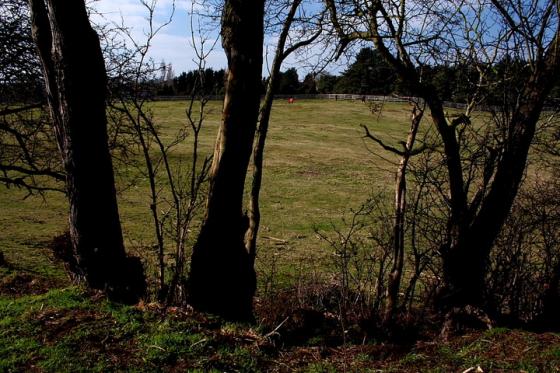Set within arable land a little under a quarter-mile to the approx southwest of Beckingham Hall, Tolleshunt Major – the former Tudor edifice having originally been granted to the Beckingham family by the original psycho loon Henry VIII in 1545 – this fine round barrow is rather confusingly annotated as ‘Mill Mound’ upon OS mapping. As a result, one had neglected to visit until now. I mean, I might well have been enthralled by the far-out drunken tricycle antics of Camberwick Green’s Windy Miller in my, er, youth... but Prehistory was supposed to be the new Rock n’Roll, right? Not bakery, even taken to those extremes.
It should be noted that in common with quite a number of Essex villages, Tolleshunt Major DID possess a windmill hereabouts, a smock formerly standing some way to the north-west at TL902114. That is, prior to its demolition in 1924. However, please be sure not to assume this and ‘Mill Mound’ are one and the same. Historic England is clear upon this point:
“Despite some erosion in the past and the levelling of the outer bank by cultivation, the bowl barrow south-west of Beckingham Hall survives well and contains archaeological remains and environmental evidence relating to the monument and the landscape in which it was constructed. It is one of few such monuments to survive as upstanding earthworks in this area of the country, most having been levelled by cultivation.... It survives as an earth mound measuring 16m in diameter and c.2m in height... Although no longer visible at ground level, a ditch from which material was excavated for the construction of the monument, surrounds the barrow mound. This has become infilled over the years but survives as a buried feature c.2m wide.” [List Entry Number: 1009449]
I parked opposite St Nicholas’ Church and sauntered down – appropriately enough – Church Road, prior to veering right to follow a public footpath heading west. The great burial mound can be seen within the cultivated field. Best schedule a late autumn/winter visit to avoid any crops in situ.
Incidentally, there is another fine round barrow (also known as ‘Mill Mound’) at Salcott-cum-Virley, some 3.5 miles to the north-east. It would be rude not to, while you’re here?













